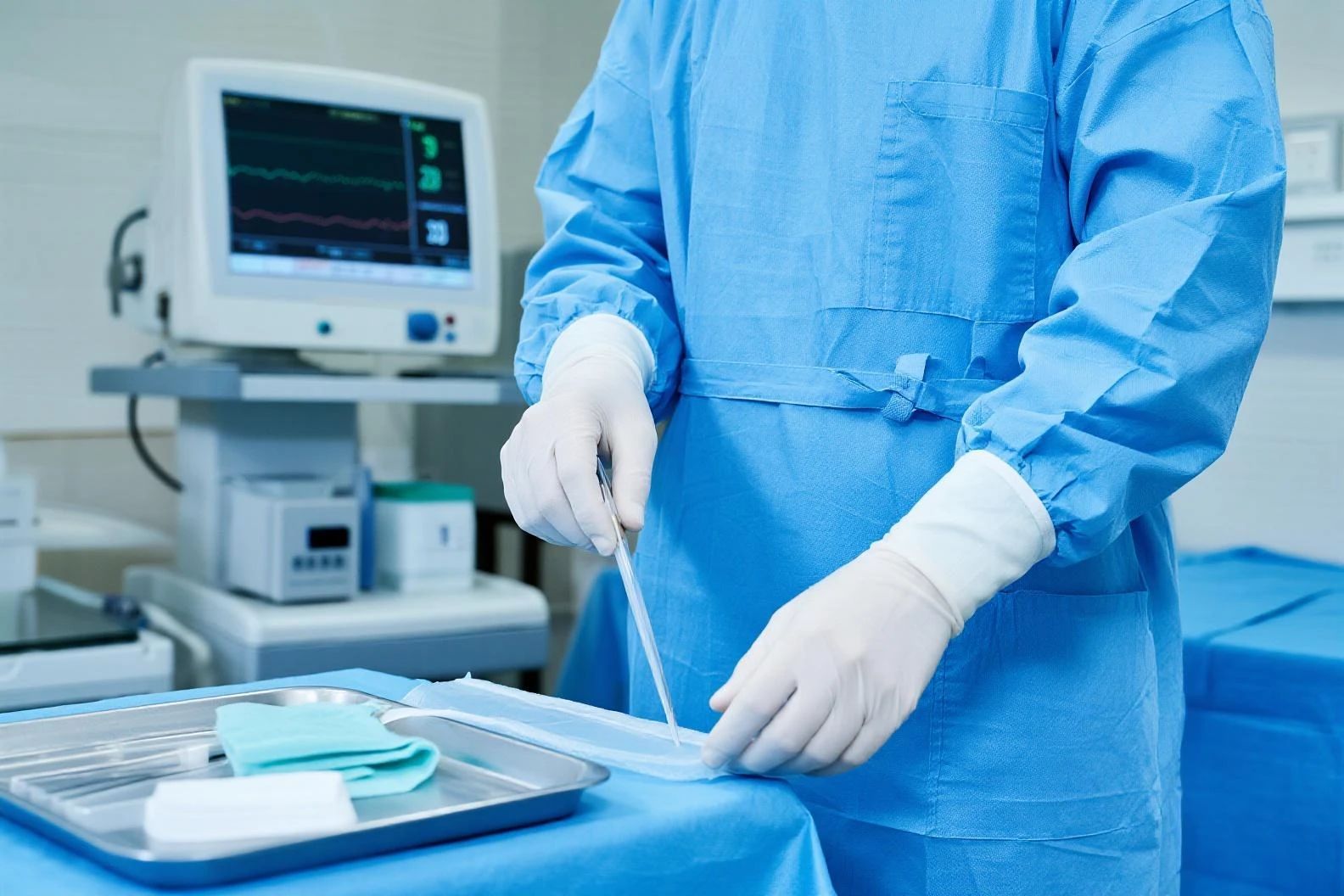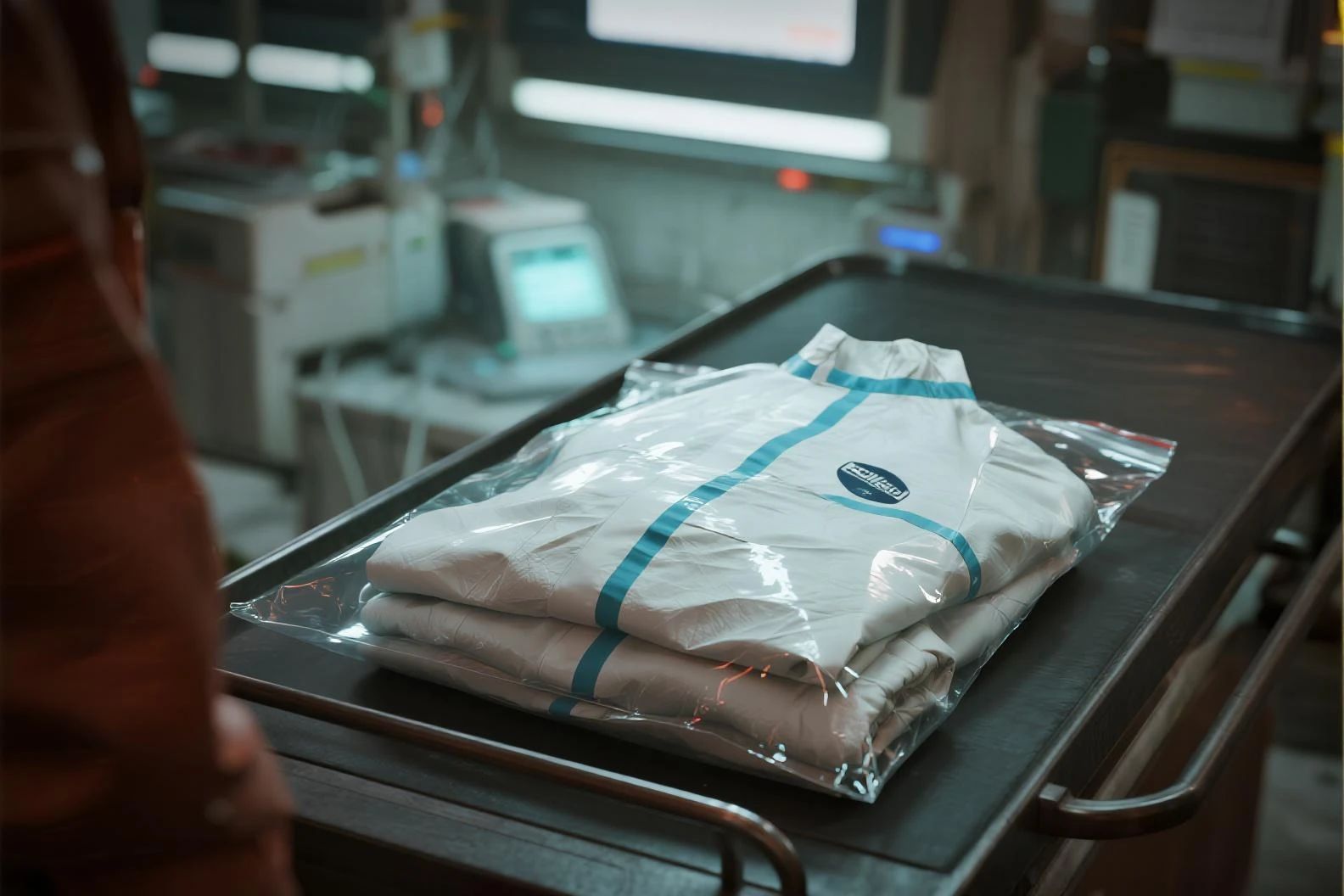Home
>
News
>
Media Focus
> Exploring Ultrasonic Solutions for Complex Non-woven Fabric Welding Challenges
In the medical and hygiene product industries, the welding process for non-woven fabrics is critical to product safety and user experience. Ultrasonic welding technology is widely adopted for its precision, cleanliness, and ability to produce strong, seamless bonds—making it ideal for high-standard applications.

01 The Overlooked “Seam Crisis”: A Hidden Threat in Medical Safety
In a medical garment factory in Zhejiang, quality control engineers use magnifying glasses to inspect newly produced surgical gowns. Tiny, micron-level burrs along seam lines are marked as defects. These nearly invisible imperfections can snag surgical gloves, harbor bacteria, and become potential sources of contamination.
According to a 2023 report by the China Nonwovens & Industrial Textiles Association (CNITA), 67% of medical non-woven fabric manufacturers face similar challenges. When materials come into direct contact with skin or wounds, “seamlessness” is not just an aesthetic goal—it’s a mandatory safety requirement.
Poor seam quality in products like surgical gowns, diapers, or wound dressings can lead to serious issues: bacterial growth, leaks, skin irritation, or even secondary infections due to fiber shedding. These problems often stem from the technical shortcomings of conventional welding methods.

02 Why Traditional Welding Methods Fall Short
Heat Sealing: The Carbonization Problem
Heat sealing relies on heated rollers often exceeding 200°C. When welding non-woven fabrics with uneven density (e.g., 80g/m² SMS materials), thin areas may burn or carbonize, while thicker zones might not fully bond—leading to weak spots. High temperatures also degrade polypropylene, reducing tensile strength and compromising product durability.
Chemical Adhesives: VOC and Cost Concerns
While PUR hot melt adhesives avoid heat damage, they can release harmful VOCs (volatile organic compounds) like formaldehyde inside sealed medical packaging. Additionally, ongoing consumable costs add significant expense, making adhesives a less sustainable solution for medical non-woven welding.
03 How Ultrasonic Welding Works & Its Key Benefits
Ultrasonic welding uses high-frequency vibrations to create molecular-level bonds between materials—without chemicals or extreme heat.
A generator produces high-frequency electrical signals (20–40 kHz).
The transducer converts these into mechanical vibrations.
The booster amplifies the vibrations and transfers them to the sonotrode (welding horn), which contacts the fabric.
Friction generates localized heat (120–170°C) only at the welding interface—the material itself stays below 60°C.
Polypropylene fibers entangle and fuse seamlessly as they cool.
This process delivers three major advantages:
No chemicals needed: Eliminates VOC risks, ideal for medical standards.
Precision control: SBT Ultrasonic systems allow 50–100% amplitude adjustment, handling fabrics from 30g/m² to 200g/m².
No material damage: Microscope scans show clean, precise welds with no charring or thermal spread.
04 SBT Ultrasonic’s Solutions to Industry Challenges
Challenge 1: Welding Multi-Layer Materials with Different Melting Points
For PP/PE composites (e.g., surgical gowns), uneven melting can cause layer separation. SBT’s Φ200mm roller welding system ensures consistent pressure and vibration transfer: the lower-melting PE layer flows first to seal gaps, while the PP layer anchors the structure—enabling strong, unified bonds.
Challenge 2: Meeting Medical Cleanliness Standards
Some ultrasonic welders require dismantling for sterilization. SBT systems feature fully sealed, stainless-steel frames with smooth, rounded surfaces for easy cleaning with alcohol or chlorine-based disinfectants. Key components use titanium alloy TC4, which offers 8x better corrosion resistance than standard steel—perfect for medical production environments.
“The best weld is the one you can’t see.”
This widely held standard in medical non-woven manufacturing is now achievable with SBT Ultrasonic’s technology. When seam strength matches the base material, and micro-burrs vanish from quality reports, the process truly serves the product: making safety invisible and protection reliable.
From operating rooms to everyday hygiene products, ultrasonic welding is raising the bar for safety and quality—providing trusted, advanced welding solutions for the medical and health sector.